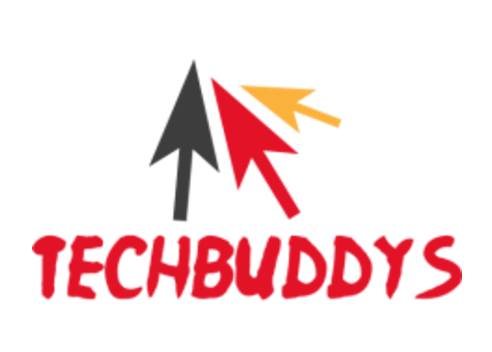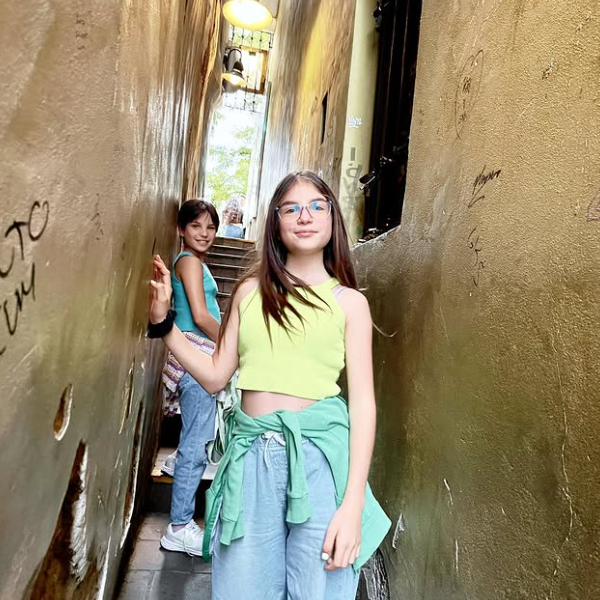Yiddish, a vibrant Germanic language with deep historical roots, emerged in the 9th century among Ashkenazi Jews in Central Europe. This unique language blends elements from High German with significant influences from Hebrew, Aramaic, and Slavic languages.
Before World War II, Yiddish boasted an impressive 11-13 million speakers, though this number tragically declined after the Holocaust, which claimed the lives of 85% of Yiddish-speaking Jews.
Today, the language thrives primarily within Hasidic and Haredi Jewish communities, with approximately 600,000 speakers worldwide as of 2021. The language uses the Hebrew alphabet for writing but has developed its own distinct orthographic conventions.
In modern times, Yiddish has gained recognition as a minority language in several countries, including Moldova, Bosnia and Herzegovina, the Netherlands, and Sweden.
The language continues to evolve, particularly in Israel and the United States, where it serves as a vital link to Jewish cultural heritage and identity.
Recent studies by the German media association Internationale Medienhilfe indicate a growing trend in Yiddish media publications, with over 40 print media outlets worldwide in 2024.
Literal and Cultural Meaning of “Yeder Veyst”
The phrase Yeder Veyst literally translates to “everyone knows” in English, combining the Yiddish words “yeder” (everyone) and “veyst” (knows). This simple expression carries deep cultural significance within Yiddish-speaking communities, serving as more than just a casual phrase.
Cultural Significance
In Jewish communities, Yeder Veyst functions as a powerful tool for expressing shared wisdom and communal understanding. When someone says “Yeder Veyst,” they’re often referring to something that’s considered common knowledge within their community – whether it’s about traditional practices, cultural norms, or widely accepted truths.
Usage Contexts
The phrase appears in various situations:
Community Knowledge: Used to reference shared cultural practices or traditions
Social Commentary: Often employed to highlight universal truths about human nature
Humor: Frequently used in Yiddish humor to create ironic effects or emphasize collective wisdom
Modern Relevance
Today, Yeder Veyst continues to thrive in Orthodox Jewish communities in places like New York and Israel, where it maintains its traditional meaning while adapting to modern contexts.
The phrase exemplifies how Yiddishkeit (Jewish cultural identity) persists through language, even as fewer people speak Yiddish as their primary language.
Within contemporary usage, Yeder Veyst often serves as a bridge between generations, connecting modern Jews to their cultural heritage while maintaining its practical function as a way to acknowledge shared understanding.
In Hasidic communities, where Yiddish remains the primary language of daily communication, the phrase retains its full cultural power and continues to reinforce community bonds.
Linguistic Roots and Usage
Etymology and Structure
The phrase Yeder Veyst has fascinating linguistic roots. Yeder comes from the German word “jeder,” meaning “everyone,” while Veyst derives from the German “weiß,” meaning “knows”. This combination perfectly demonstrates how Yiddish blends different language elements to create meaningful expressions.
Common Usage
In everyday conversation, Yeder Veyst appears in several contexts:
- Social Settings: “Yeder veyst az di mame makht di beste kugel” (Everyone knows that mom makes the best kugel)
- Community Knowledge: Used to reference shared cultural practices or traditions
- Humorous Situations: Often employed with a touch of irony or sarcasm
Related Expressions
The phrase connects to other Yiddish expressions that emphasize collective understanding:
Vos tut zikh (What’s happening?)
Vos hert zikh (What’s being heard?)
Modern Applications
Today, Yeder Veyst maintains its relevance in Jewish communities, particularly in places like New York and Israel. The phrase appears frequently in both casual conversations and formal settings, serving as a bridge between traditional wisdom and contemporary life.
In Hasidic communities, where Yiddish remains the primary language, the expression continues to reinforce communal bonds and shared understanding.
Cultural Impact
The phrase exemplifies the Yiddish tendency toward expressing complex ideas through simple, relatable language. It’s particularly powerful in storytelling, where it acts as a rhetorical device to establish common ground between speaker and audience.
This linguistic feature helps maintain cultural continuity and strengthens community ties through shared knowledge and understanding.
Broader Cultural Implications
Humor and Storytelling
Yeder Veyst plays a crucial role in Jewish humor, often serving as a rhetorical device that builds anticipation for punchlines. In traditional Jewish comedy, the phrase creates an instant connection between the storyteller and audience by acknowledging their shared cultural understanding.
Community Values
The expression reflects deep-rooted Jewish cultural values that emphasize collective wisdom. In Yiddish-speaking communities, it serves as a reminder that certain truths are universally understood without needing explanation.
For example, when someone says “Yeder Veyst az di mame makht di beste kugel” (Everyone knows that mom makes the best kugel), it reinforces family traditions and shared experiences.
Modern Cultural Impact
Today, Yeder Veyst continues to bridge generations in Jewish communities, particularly in places like New York and Israel. The phrase appears in contemporary media, literature, and everyday conversations, helping preserve cultural identity while adapting to modern contexts.
Storytelling Technique
In Jewish folklore, Yeder Veyst often punctuates stories to:
Create common ground between narrator and listeners
Signal upcoming moral lessons
Add humor through shared understanding
This linguistic feature helps maintain cultural continuity while strengthening community bonds through generations. The phrase exemplifies how language can serve as both a practical communication tool and a vessel for preserving cultural heritage.
Comparison with Similar Phrases
Similar Expressions
Yeder Veyst shares its essence with several other Yiddish expressions that emphasize communal knowledge. The phrase “Nu, iz dos a chidush?” (Is that news?) carries a similar meaning but with more sarcastic undertones.
Another related expression is “Keyner veys nit” (Nobody knows), which ironically emphasizes shared understanding through its negative form.
Tonal Variations
While Yeder Veyst conveys straightforward acknowledgment of shared wisdom, other expressions add different flavors:
“Az me muz, ken men” (If you have to, you can) – emphasizes determination
“Der mentsh trakht un got lakht” (Man plans and God laughs) – adds humorous wisdom
“Azoy geyt es” (That’s the way it goes) – expresses acceptance
Cultural Context
In modern Jewish communities, these phrases often work together to create layers of meaning. For example, someone might say “Yeder Veyst” followed by “Nu, iz dos a chidush?” to emphasize something particularly obvious while adding a touch of humor.
This combination of expressions reflects the rich tapestry of Yiddish communication, where multiple phrases work together to convey complex meanings.
Read More: 1-910-403-6470: Understanding, Identifying, and Managing Calls from Unknown Numbers
Modern Relevance
Yiddish in Modern English
Many Yiddish words have become part of everyday English vocabulary. Common examples include “glitch” (malfunction), “chutzpah” (audacity), and “schlep” (to carry or drag). These words demonstrate how Yiddish expressions continue to enrich modern communication while maintaining their cultural essence.
Digital Evolution
Social media platforms have given new life to Yiddish expressions like Yeder Veyst. The phrase appears in memes, online discussions, and viral content, helping preserve cultural wisdom for younger generations. This digital presence allows traditional expressions to reach broader audiences while maintaining their authentic meaning.
Contemporary Usage
In modern contexts, Yeder Veyst serves multiple purposes:
Cultural Identity: Strengthens bonds in Jewish communities
Humor: Often used in comedic content and social commentary
Shared Understanding: Creates instant connection in online spaces
Language Adaptation
The survival of Yiddish phrases reflects broader linguistic trends. Younger Jews, especially those with strong religious involvement, continue using traditional terms while adapting them to modern contexts. Even non-Jewish speakers adopt these expressions, particularly those who have Jewish friends or work in Jewish organizations.
Cultural Impact
Yeder Veyst has found its way into various aspects of popular culture, including literature, film, and social media. This integration helps bridge generational gaps while preserving cultural heritage.
The phrase’s adaptability in digital communication demonstrates how traditional wisdom can thrive in contemporary settings, making it particularly relevant for modern audiences seeking connection to their cultural roots.
Conclusion
Yiddish expressions like Yeder Veyst continue to enrich modern communication while preserving centuries of Jewish wisdom and cultural heritage. In today’s digital age, these phrases find new life through social media, memes, and online communities, helping younger generations connect with their roots.
The survival of Yiddish phrases in contemporary culture demonstrates the language’s remarkable adaptability. From Orthodox Jewish communities where it remains a primary language to broader popular culture where words like “schlep” and “chutzpah” have become commonplace, Yiddish maintains its vitality.
The phrase Yeder Veyst, along with other Yiddish expressions, serves as a bridge between generations, connecting modern Jews to their heritage while adapting to contemporary contexts. This linguistic resilience reflects the broader story of Jewish cultural preservation, where traditional wisdom finds new relevance in modern settings.
As Jewish communities worldwide continue to evolve, these expressions remain powerful tools for maintaining cultural identity, fostering community bonds, and sharing collective wisdom across generations.


